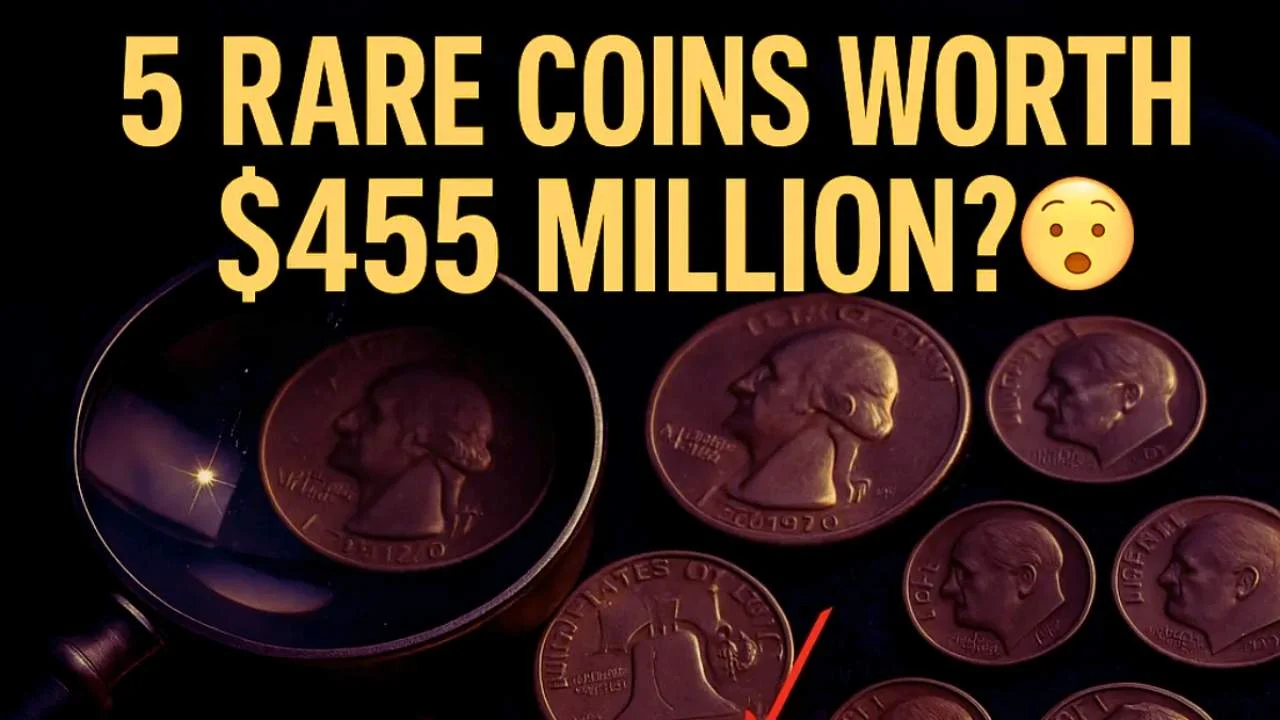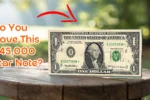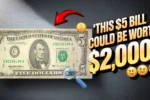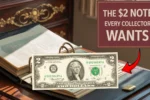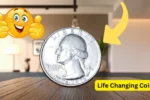Could Your Spare Change Be Worth $455 Million: Ever emptied your pockets or change jar and wondered if that handful of coins might be worth more than face value? You’re not alone. In recent years, collectors have paid eye-watering sums for rare coins that many people have unknowingly used to pay for coffee or groceries. One such buzzworthy claim: a collection of rare dimes and Bicentennial quarters with a combined estimated value of $455 million. Could you be holding onto a small fortune? Let’s take a look at five coins that have caught the attention of numismatists—and could catch you a huge payday.
1. 1975 No-S Roosevelt Dime – Worth Over $500,000
In 1975, the U.S. Mint accidentally released a small batch of Roosevelt dimes without the customary “S” mintmark from the San Francisco Mint. Only two are known to exist today. One sold at auction for $516,000. What makes this coin rare isn’t just the missing mintmark—it’s that it was never meant to be released to the public.
What to look for: A 1975 dime without any mintmark under the date. Be sure to have it authenticated by a professional.
2. 1968 No-S Roosevelt Dime – Value: $50,000+
Another mint error, the 1968 No-S Roosevelt dime is a rare collector’s item. Only a few examples were made without the “S” mintmark, making them extremely valuable to collectors.
What to look for: Like the 1975 No-S dime, this coin should have no mintmark under the date. Confirm it’s a proof coin—it’ll have a mirror-like finish.
3. 1916-D Mercury Dime – Value: Up to $200,000
The Mercury dime is iconic, and the 1916-D version is its holy grail. With a mintage of only 264,000, it is one of the rarest dimes in circulation. Pristine examples have fetched six-figure prices at auction.
What to look for: The date 1916 and a tiny “D” mintmark on the reverse side near the bottom left of the fasces (a bundle of rods). It must be authenticated, as counterfeits are common.
4. 1976 Bicentennial Quarter (No Mintmark or Double Die Error) – Value: Up to $75,000
Bicentennial quarters were minted in huge numbers to celebrate the 200th anniversary of American independence, but a few with double die errors or missing mintmarks are incredibly rare and highly valuable.
What to look for: On error coins, you’ll see doubled letters in the words “Liberty” or “In God We Trust.” Some rare ones may also lack the usual mintmark (D, S, or P).
5. 1976-S Bicentennial Silver Proof Quarter – Value: Up to $10,000
Most people don’t realize that a limited number of Bicentennial quarters were struck in 40% silver for collectors. While not as rare as error coins, high-grade examples—especially in perfect condition—can sell for thousands.
What to look for: The “S” mintmark and a noticeably shinier, mirror-like surface. Weighing the coin (it should be heavier than a regular copper-nickel quarter) can also confirm its silver content.
Why Are These Coins Worth So Much?
It comes down to a mix of rarity, condition, and demand. Mint errors, low production numbers, or limited-release collector editions make these coins desirable. The better preserved the coin (graded by services like PCGS or NGC), the more valuable it becomes.
How to Check If Your Coins Are Valuable
-
Inspect the date and mintmark carefully.
-
Look for errors such as doubled lettering or missing mintmarks.
-
Use a magnifying glass and a good light source to examine details.
-
Weigh the coin—some rare coins differ slightly in weight.
-
Consult a professional or send the coin to a grading service for authentication.
Final Thoughts
Your spare change could be more than just pocket money—it might be a retirement fund in disguise. While most coins aren’t rare, just one exceptional find could change your financial future. So before you dump your coins into the vending machine, take a few minutes to check for rare dimes and Bicentennial quarters. You never know—you might be holding a slice of that $455 million treasure.
FAQs
Q1: Are Bicentennial quarters still in circulation?
Yes, many Bicentennial quarters are still in everyday circulation, but most are common and worth face value unless they have specific errors or are made of silver.
Q2: How do I know if my coin is silver?
Try weighing it (silver quarters weigh more than clad ones), or look for the absence of a copper edge. You can also get it tested or appraised.
Q3: Where can I sell rare coins?
You can sell to coin dealers, at auctions, online marketplaces like eBay, or through grading services that offer auction platforms.
Q4: How do I get a coin authenticated?
Send it to a professional grading service like PCGS (Professional Coin Grading Service) or NGC (Numismatic Guaranty Corporation).
Q5: Can circulated coins still be valuable?
Yes! While uncirculated coins are more valuable, rare errors or low-mintage coins in any condition can still fetch high price.
